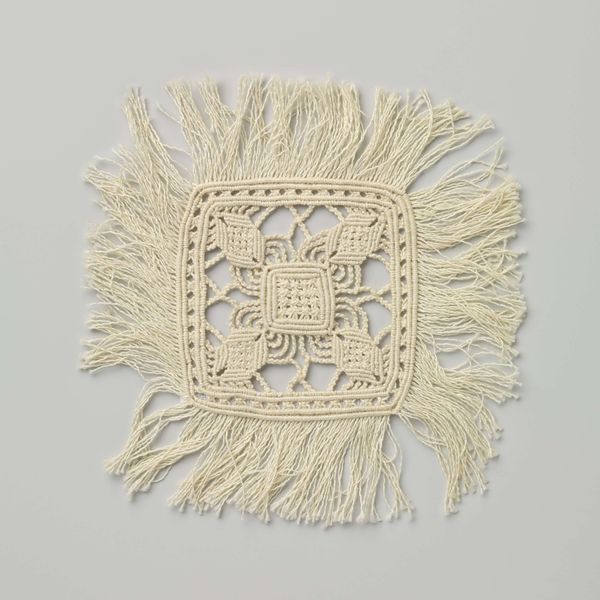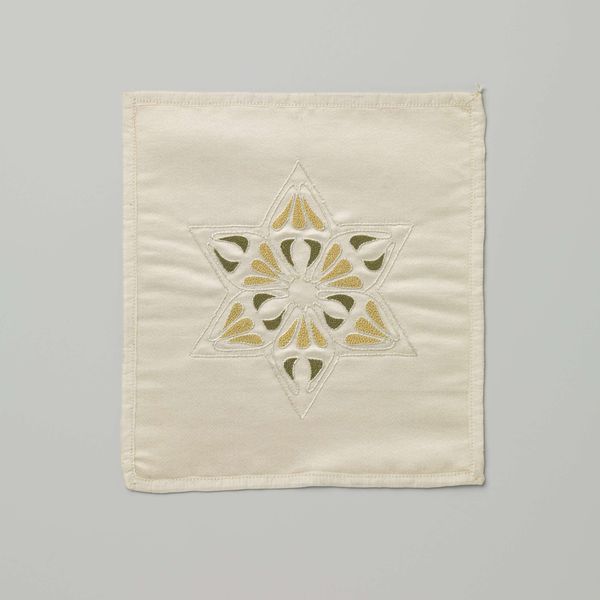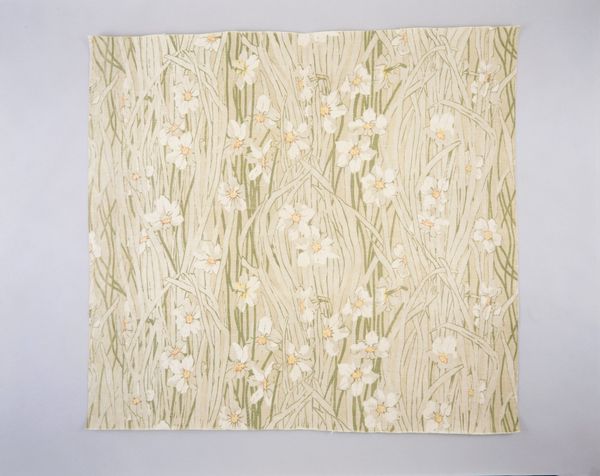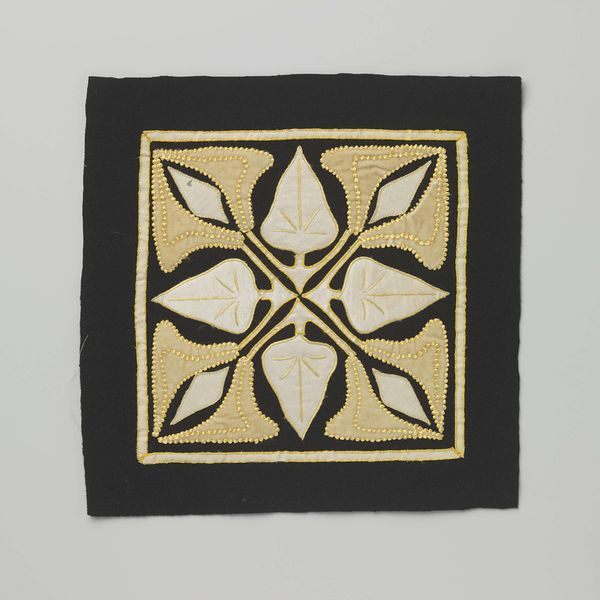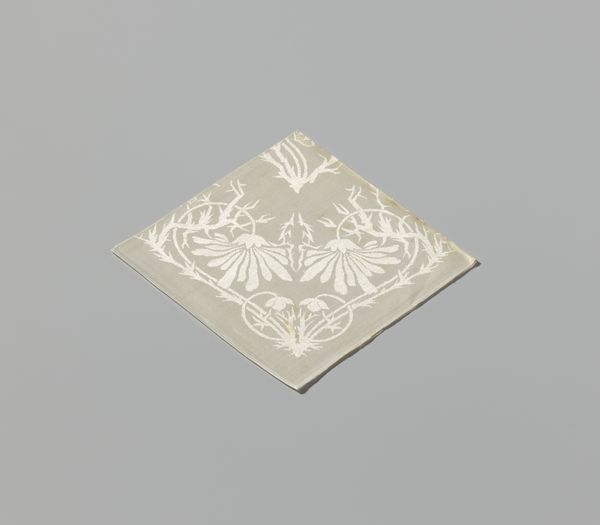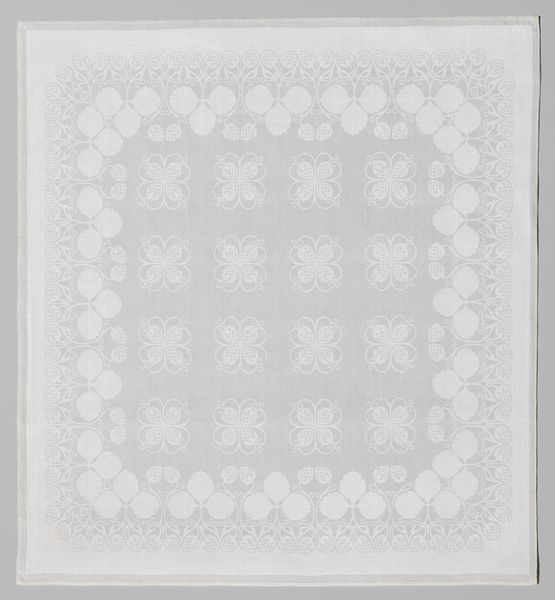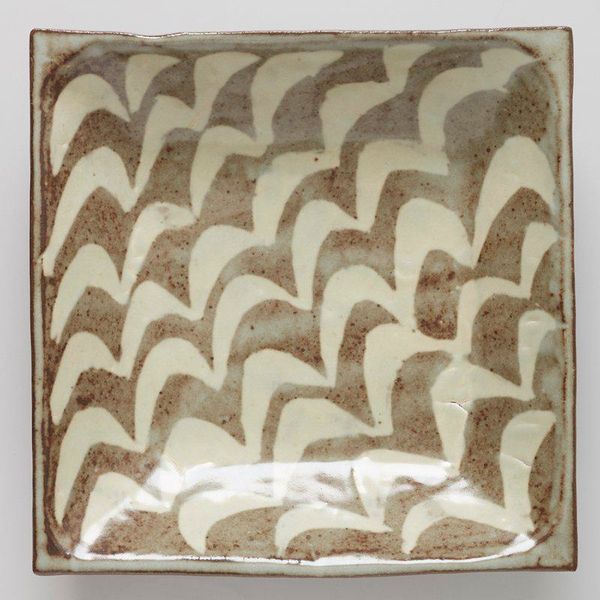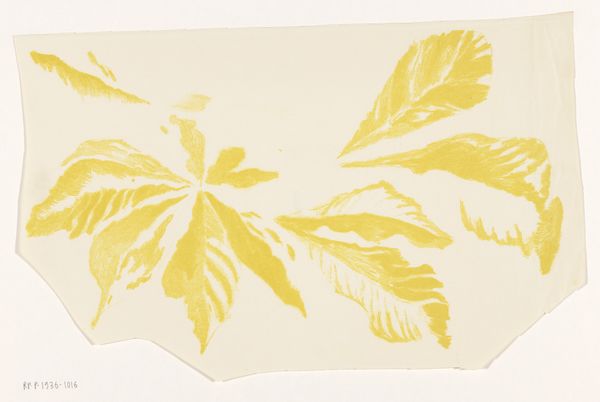
Dolley in bladvorm, van applicatie van linnen op ajour ondergrond. c. 1900 - 1925
0:00
0:00
textile
#
natural stone pattern
#
circular oval feature
#
naturalistic pattern
#
arts-&-crafts-movement
#
textile
#
repetitive shape and pattern
#
flower pattern
#
repetition of pattern
#
regular pattern
#
pattern repetition
#
decorative-art
#
imprinted textile
#
layered pattern
Copyright: Rijks Museum: Open Domain
Curator: What a delicate piece! It's listed as “Dolley in bladvorm, van applicatie van linnen op ajour ondergrond”—roughly translated, "Leaf-shaped panel with linen application on openwork background." The piece is dated circa 1900-1925 and comes to us from Industrieschool De Windroos. Editor: It immediately evokes a sense of quiet domesticity, doesn’t it? The muted palette, the intricate detail… It’s like a Victorian daydream, rendered in fabric. Curator: Exactly! And if you look closer, the texture reveals a meticulous process. The way the solid linen leaf is overlaid on the openwork—it’s all about contrasting the tangible with the intangible. Consider the sheer labor involved. Editor: And the social implications! This piece likely comes from a tradition deeply entwined with women’s labor, skills often dismissed as ‘craft’ rather than ‘art’. These textiles, created in schools, served to equip women with skills for economic independence but simultaneously reinforced gendered expectations within domestic settings. Curator: A duality inherent in the Arts and Crafts movement as well! We see the beauty of hand-making pushed against industrialized norms, yet operating within its own structured workshop. The repetitive nature of the pattern, too. This required discipline, time... resources. Editor: Which circles us back to the historical moment. Think about early 20th century, social shifts... women entering the workforce in new ways but still confined by expectations around their 'proper' place. Is this leaf a symbol of growth, freedom, or is it bound by the structure of the textile? Curator: Interesting perspective! Perhaps both? This delicate intersection really speaks to the heart of Materialist interpretation and reveals how close "making" gets to expressing individual statements. Editor: It reminds us that even what appears as ‘simple’ domestic craft holds within it stories of women, labor, and societal expectations of the time. Curator: Absolutely. It transforms the very process into one that embodies resilience, creativity, and understated agency. Editor: So, in seeing something so humble, so apparently simple, we can access not just the technique, but narratives of lives interwoven within each stitch.
Comments
No comments
Be the first to comment and join the conversation on the ultimate creative platform.
